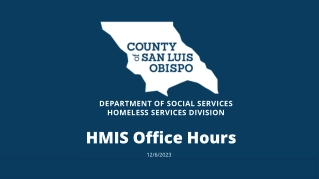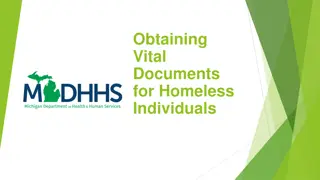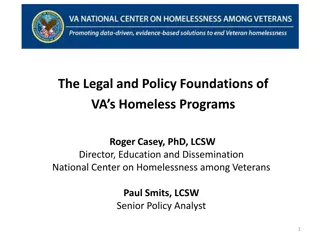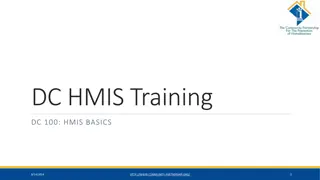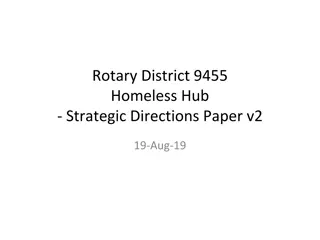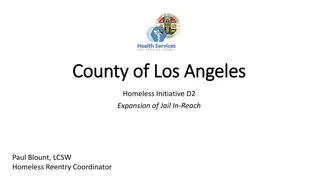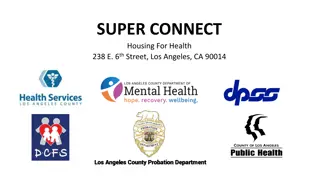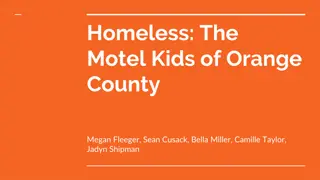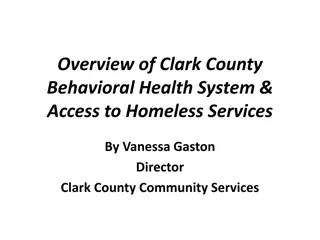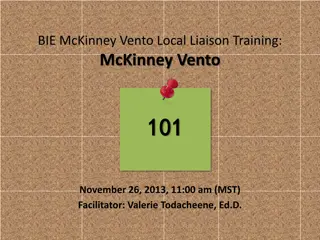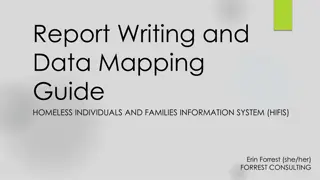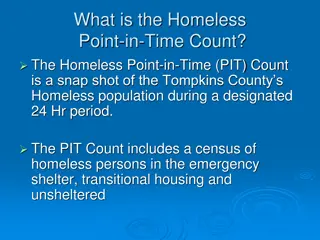Comprehensive Data System for Homeless Individuals and Families
Locally-administered data system is used to record and analyze client, service, and housing data for homeless individuals and families. It integrates data across projects to understand the homeless population's characteristics, needs, and movements. The system captures basic demographics, housing status, financial information, and services provided, aiming to improve data quality and reporting efficiency. Data standards are outlined in manuals, with efforts to streamline processes through trainings and monthly quality reports. Overall, the system supports data-driven decision-making to enhance services for the homeless population.
Uploaded on Sep 30, 2024 | 0 Views
Download Presentation

Please find below an Image/Link to download the presentation.
The content on the website is provided AS IS for your information and personal use only. It may not be sold, licensed, or shared on other websites without obtaining consent from the author.If you encounter any issues during the download, it is possible that the publisher has removed the file from their server.
You are allowed to download the files provided on this website for personal or commercial use, subject to the condition that they are used lawfully. All files are the property of their respective owners.
The content on the website is provided AS IS for your information and personal use only. It may not be sold, licensed, or shared on other websites without obtaining consent from the author.
E N D
Presentation Transcript
Locally-administered data system used to record and analyze client, service and housing data for individuals and families who are homeless or at risk of homelessness. It has the capacity to integrate and unduplicated data across projects in a community. Data is used to understand the size, characteristics, and needs of the homeless population at multiply levels.
Basic demographics (i.e., name, DOB, SSN, Household) Disabling Conditions Residence Prior to Program Entry Housing Status Income and Source Non-Cash Benefits Financial Services Provided Housing Relocation & Stabilization Services Provided Destination
108 page Data Standard Manual who has time to read that? Poor data quality among the providers. Different definitions among providers. Report formats are easy for funders and policy makers to read; however, case managers continued to contact HMIS staff with data questions (i.e., number of clients served, services provided).
Data Standards Manual condensed to 12 pages. Trainings were divided into 2 parts; data collection and data entry. HMIS help desk. Modified data collection sheet. Monthly data quality reports were distributed monthly. Surprisingly the letter grade was a motivating factor for providers.
Data Quality Report Annual Performance Report Client Case Plan Report Self Sufficiency Outcome Matrix


